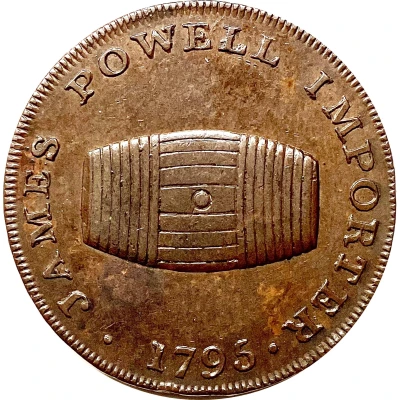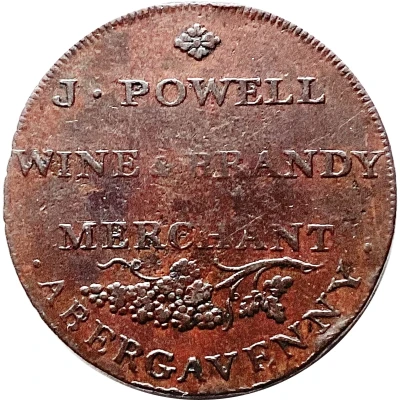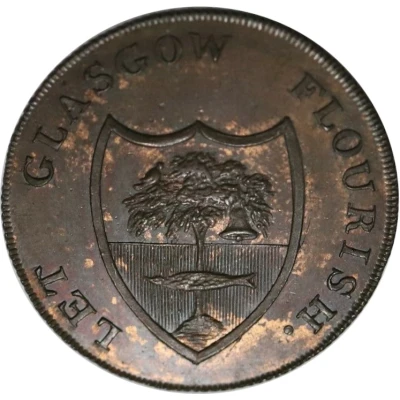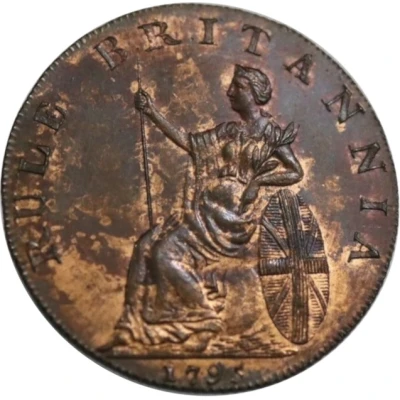


© GT Foreman (CC BY-NC)
½ Penny Monmouthshire - Monmouth / J. Powell
1795 year| Copper | - | 29 mm |
| Issuer | United Kingdom (United Kingdom, British Overseas Territories and Crown Dependencies) |
|---|---|
| King | George III (1760-1820) |
| Type | Token |
| Year | 1795 |
| Value | ½ Penny (1⁄480) |
| Currency | Conder tokens (1787-1797) |
| Composition | Copper |
| Diameter | 29 mm |
| Thickness | 2 mm |
| Shape | Round |
| Technique | Milled |
| Orientation | Coin alignment ↑↓ |
| Demonetized | Yes |
| Updated | 2024-10-09 |
| Numista | N#328491 |
|---|---|
| Rarity index | 95% |
Reverse
Lettering across four lines with bunch of grapes above and vine sprig below.
Script: Latin
Lettering:
J · POWELL
WINE & BRANDY
MERCHANT
MONMOUTH
Edge
Plain with incuse lettering
Note: plain edge variety exists (see below)
Lettering: PAYABLE AT MONMOUTH AND ABERGAVENNY . X .
Comment
James Powell was a wine and brandy merchant who released tokens for Abergavenny and Monmouth. This token DH#3 is for Monmouth. DH#2 is also Monmouth but has a bunch of grapes below the reverse lettering, DH#1 is similar but has 'ABERGAVENNY' on the reverse.Interesting fact
The A Token ½ Penny (Monmouthshire - Monmouth / J. Powell) 1795 from United Kingdom (United Kingdom, British Overseas Territories and Crown Dependencies) made of Copper is a rare and valuable coin, with only a few known examples surviving to this day. One interesting fact about this coin is that it was issued during a time of great economic hardship in the United Kingdom, particularly in rural areas like Monmouthshire, where the coin was minted. The coin's issuer, J. Powell, was a local merchant who sought to address the shortage of small change in circulation by minting his own coins. Despite its humble origins, the A Token ½ Penny has become a highly sought-after collector's item among numismatists due to its rarity and historical significance.



